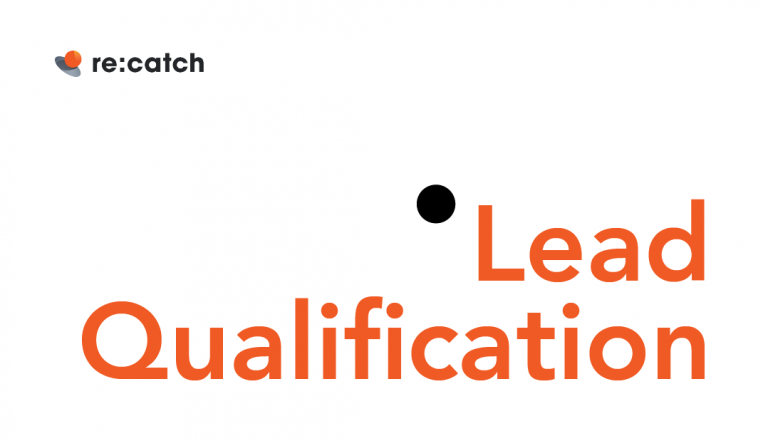The Ultimate Guide to Lead Routing: Boost Your Sales with These 5 Strategies
What Is Lead Routing?
In the sales world, generating and converting leads into paying customers is critical for increasing sales conversion rate. However, not all leads are created equal, and it’s important to prioritize and distribute them effectively among your sales team. This is where lead routing comes into play. In this blog post, we’ll introduce what lead routing is and why it matters, explore the five most popular lead routing strategies and how to implement them, and provide tips for choosing the right lead routing strategy for your business.

Sales lead routing is a crucial process for any business that wants to maximize its sales potential. It is a process of distributing leads to the right sales reps and SDRs based on predetermined criteria. By directing incoming leads to the right salesperson or team, companies can ensure that every lead is addressed in a timely and effective manner.
For example, a company that sells software to small businesses may receive leads from various sources such as website forms, social media, and referrals. By using lead routing, they can assign website leads to their inside sales team, social media leads to their social media specialist, and referral leads to their account executives. This not only saves time and resources, but also ensures that each lead is handled by the right person with the necessary expertise.
Why Lead Routing Matters
Lead routing not only benefits businesses by enabling them to prioritize and assign leads more efficiently, but it can also have a direct impact on sales team productivity and conversion rates. By automating the lead assignment process, sales reps can focus on closing deals instead of wasting time trying to figure out which leads to follow up on. This means they can make more calls, have more conversations, and ultimately close more deals.
Furthermore, lead routing allows for more targeted and personalized outreach, since SDRs can be matched with leads based on their specific strengths and areas of expertise. This leads to a higher conversion rate, as reps are more likely to close deals when they are working with leads that are a good fit for their skills and experience. Now that we understand the importance of lead routing in making sales more efficient, let’s dive into the five most popular lead routing strategies and how to implement them.
Lead Routing Strategy 1: Round Robin
One of the most popular lead routing strategies is called round robin, which is a fair and simple way to distribute leads evenly among sales development reps in a team. The round robin method works by assigning incoming leads in a rotating order, so that each SDR gets an equal number of leads over time. For instance, if a team of five SDRs receives 100 new leads in a week, the round robin method will assign 20 leads to each SDR, starting with SDR 1, then SDR 2, and so on, until all five SDRs have received 20 leads each.
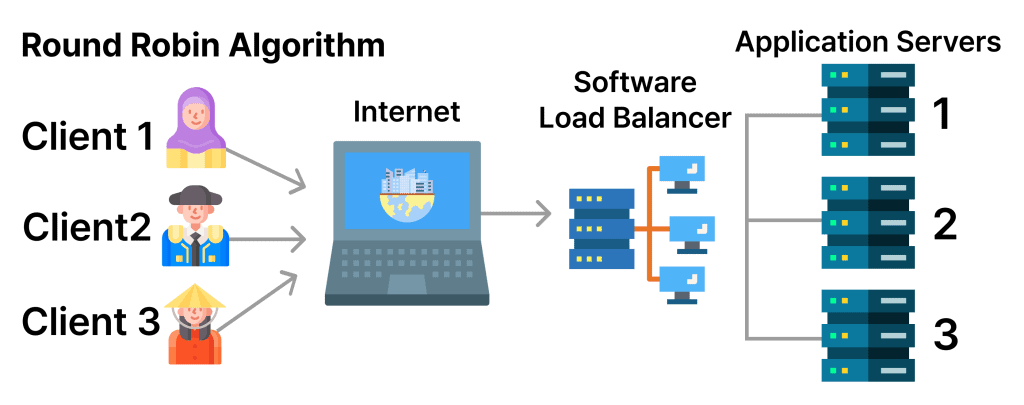
The round robin lead routing strategy comes with a number of benefits that make it a popular choice for many businesses. Firstly, it ensures a fair distribution of leads amongst the SDRs, which means that no one person is overloaded with leads while others have very few. This helps to prevent burnout and ensures that each SDR has an equal opportunity to close deals.
Additionally, round robin can help to optimize response times, as leads are automatically assigned to the next available SDR in the rotation. This means that leads are contacted promptly, which can be crucial in making a good impression and winning the sale.
This can help businesses to identify top performers and areas for improvement, which can in turn help to improve the overall efficiency of the sales team. Using an automated tool like Re:catch, round robin assignment can be easily implemented. Re:catch has a built-in feature that allows round robin assignment when you create a booking page that customers can use to book sales calls.
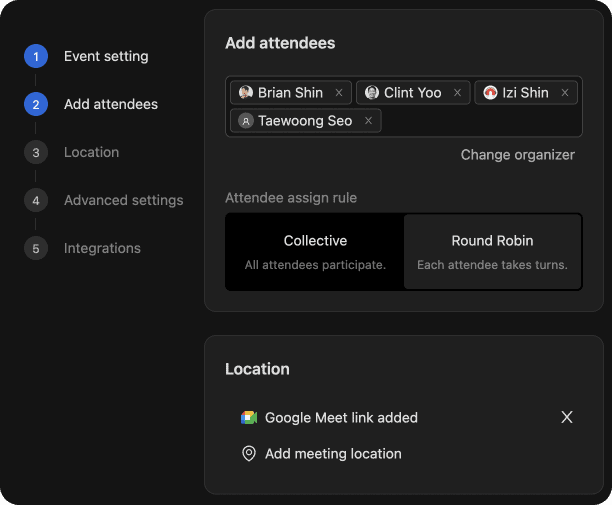
Lead Routing Strategy 2: Geolocation
Geolocation is a lead routing strategy that leverages the geographical location of both the lead and the sales representative. When a lead comes in, the lead routing system identifies the location of the lead and assigns the lead to the nearest sales representative.
This strategy is particularly useful for businesses that have sales representatives scattered across different locations or territories. By assigning leads based on location, businesses can ensure that their sales reps are more likely to have knowledge about the local market and can tailor their sales pitch accordingly.
One major benefit of geolocation lead routing is that it ensures that leads are assigned to the sales representative closest to them. This reduces the likelihood of a delay in follow-up, since the rep will be in the same time zone and can respond to the lead more quickly. Additionally, this strategy can be especially helpful for companies with a distributed sales team, as it can help to balance the workload and ensure that reps are not being overloaded with leads in one particular region.
Overall, geolocation lead routing can help to streamline the sales process and improve the customer experience by ensuring that leads are being responded to in a timely and efficient manner. Many lead routing software solutions, such as Salesforce and HubSpot, offer built-in geolocation routing features that make this process easier to manage.
Lead Routing Strategy 3: Lead Scoring
The third strategy for lead routing is lead scoring. Unlike round robin and geolocation, this strategy involves assigning scores to each lead based on a set of predetermined criteria. The criteria used for scoring can vary depending on the business, but typically include factors such as the lead’s job title, company size, and level of engagement with the company’s website or marketing materials. The higher the lead score, the more likely the lead is to convert into a sale.
For example, let’s say a company has a lead scoring system in place that assigns points to leads based on their level of engagement with the company, such as visiting the website, downloading content, or attending webinars. The system then assigns a priority score to each lead, with higher priority leads being passed on to sales reps first. This ensures that reps are spending their time on the most promising leads and not wasting time on leads that are less likely to convert.
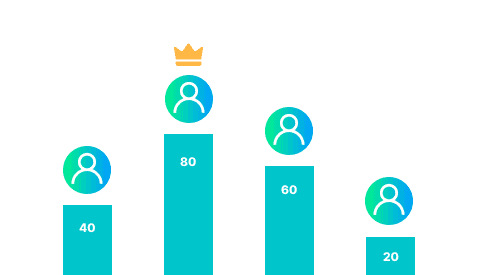
One of the biggest benefits of lead routing based on lead score is that it allows sales teams to prioritize their efforts on the leads that are most likely to convert, thus increasing the efficiency of the sales process. By setting specific criteria for lead scores, sales reps can focus on leads that have a higher chance of closing, instead of wasting time on leads that are less likely to convert. This not only saves time, but also helps to ensure that sales reps are utilizing their time and efforts in the most effective way possible.
Additionally, this method can help to identify patterns and trends in the types of leads that are most likely to convert, allowing the sales team to adjust their approach accordingly and improve their overall success rate To implement lead scoring, businesses can use various tools such as Marketo, which offers advanced lead scoring capabilities. With Marketo, businesses can set up scoring rules based on criteria such as demographic information, behavior, and engagement with marketing materials.
Lead Routing Strategy 4: Availability
Another popular lead routing strategy is availability-based routing. This involves assigning leads to sales reps based on their availability to take calls or follow up on leads. For example, if a sales rep is available and not currently on a call, they may be assigned the next available lead. This approach ensures that leads are assigned quickly and not left waiting for a response from the sales team.
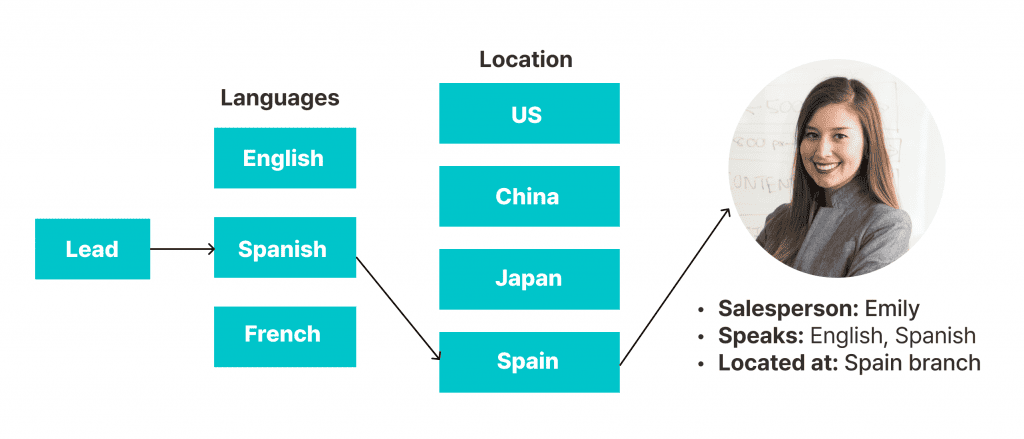
Lead routing based on availability can bring benefits to both the sales team and the leads. By taking into account the availability of sales reps, leads can be assigned to the most suitable rep, ensuring prompt follow-up and better customer experience. In addition, this approach can increase the chances of lead conversion since the reps are more likely to reach out to the leads when they are available.
To implement availability-based lead routing, companies can use tools like Salesforce, which allows admins to set up rules and criteria for assigning leads based on rep availability. Another option is to use a sales software like Re:catch, which provides scheduling and routing based on reps’ calendars.
Lead Routing Strategy 5: Use Cases
Lead routing can also be based on specific use cases of customers. For instance, some businesses may route leads based on the type of product or service they are interested in, their industry, or their budget. For example, a software company might route leads interested in their marketing automation platform to a specific sales team, while leads interested in their CRM software might go to a different team. Or, the company might route leads in the healthcare industry to a specific team that specializes in that sector.
Lead routing based on use cases provides several benefits, such as improved customer experience, higher conversion rates, and increased sales efficiency. By matching leads with the right sales representatives who have the necessary expertise and skills, the sales team can provide a more tailored approach to each lead.
This personalized approach can lead to higher conversion rates as the customer is more likely to feel understood and valued. Additionally, the sales team can work more efficiently and effectively, closing deals faster and freeing up more time to focus on other sales activities.
This can be done by analyzing past sales data and customer behavior to determine which leads are likely to convert and which representatives are best suited to handle them. Once this is done, the routing rules can be set up in the lead management system to ensure that each lead is matched with the appropriate sales representative.
Getting Started
Lead routing is a crucial aspect of a successful sales strategy that helps businesses to optimize their sales process and increase conversion rates. By adopting one or more of the five popular lead routing strategies we discussed, businesses can automate their lead assignment process, ensure timely follow-up, and improve the chances of closing deals with qualified leads.
Whether it’s Round Robin, geolocation, lead scoring, availability, or use cases, each strategy has its own strengths and can be customized to fit the unique needs of a business. By choosing the right lead routing strategy and implementing it effectively, businesses can streamline their sales process, save time and resources, and ultimately increase revenue.
If you’re looking to get started with implementing these strategies, tools like Re:catch can make it easy for sales reps to create a booking page and enable Round Robin lead routing by adding sales reps. With Re:catch, leads are automatically assigned evenly to each sales rep, making it a simple and effective solution for lead routing.
Looking to set up your lead routing on sales calls? Get started with Re:catch!







